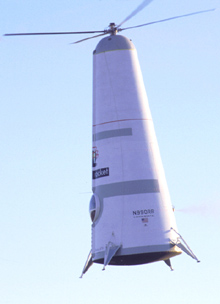Roton

Roton was an American design for a piloted commercial space vehicle intended to provide routine access to orbit for a two-person crew and cargo. The Roton would be a reusable, single-stage-to-orbit (SSTO), vertical takeoff and landing (VTOL) vehicle, 19.5 meter high and 6.7 meters in diameter, able to carry up to 3,200 kilograms to and from a 300 kilometer-high orbit. It would takeoff vertically powered by NASA's Fastrac engine burning liquid oxygen and jet fuel, then circularize its orbit following main engine cutoff with orbital maneuvering engines. Once its payload was deployed and any return cargo captured, the Roton would reenter and descend using a four-blade, nose-mounted rotor. During the high-speed phases of flight, the base of the vehicle would create most of the drag while the rotor remained windmilling behind, stabilizing the vehicle until it reached subsonic speed. Then the rotor would be spun up and the blades enter a helicopter-style autorotation flight mode, enabling the pilot to glide the craft to a precision landing.
The manufacturer, Rotary Rocket Company, expected a market to develop whereby satellite operators and insurance companies sent rescue missions to repair or retrieve damaged or outdated satellites. But although the Roton Air Test Vehicle began flight tests in 1999, technical problems and NASA's decision not to select Roton for its X-33 project stalled further development.


